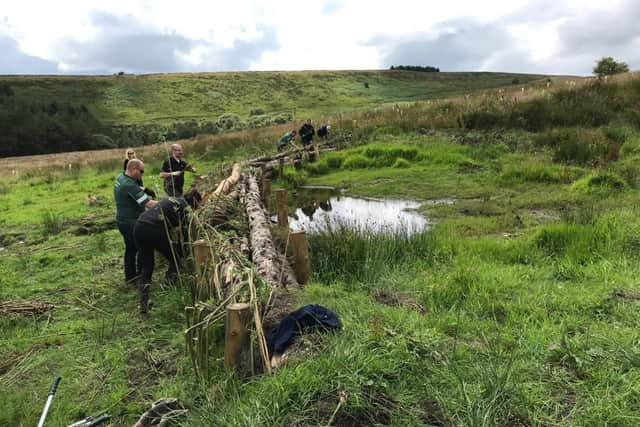Projects in South Yorkshire aim to use the natural way to cut the threat of flooding
These natural flood management processes are aimed at protecting, restoring, and mimicing the natural functions of catchments, floodplains and the coast to slow and store water.
Community, charity and council projects are set to benefit from the £25 million Natural Flood Management programme, Floods Minister Robbie Moore recently announced.
Advertisement
Hide AdAdvertisement
Hide Ad

Environment Agency chair Alan Lovell said: “It’s exciting to see such appetite for Natural Flood Management, recognising its value in providing not only benefits against flood risk but also wider support for nature recovery.
“I’m proud of the role the Environment Agency is playing in leading this pioneering programme. We look forward to working with partners to help natural techniques become a mainstream option for flood protection and help create more climate resilient places.”
City of Doncaster Council has proposed two interlinked projects that would work together. One will be on Bentley Mill Stream and will include the creation of wetland and wet woodland habitat. The second will improve flood plain connectivity, create wetland scrapes and improve public access on council-owned land in Bentley.
Advertisement
Hide AdAdvertisement
Hide AdThe Ribble Rivers Trust has has also proposed a number of projects focusing on slowing river flows across the Ribble catchment, in Darwen, Clitheroe and Lea Green.


It is hopes that swales, ponds and leaky barriers across watercourses will slow and store floodwater in the upper reaches of the River Darwen catchment, while vegetation management and new woodland will intercept the flow of water as it runs downhill, reducing runoff and enabling water to be stored in the soil.
The announcement comes after a wide range of applications were submitted to the Environment Agency by community groups, environmental charities and councils for grants, following the launch of the largest-ever investment in natural flood management schemes in September last year, says the organisation.
The Environment Agency led a review of these applications, with input from Defra and Natural England.
Advertisement
Hide AdAdvertisement
Hide AdMark Lloyd, chief executive of the Rivers Trust, said: “We warmly welcome this significant fund which will not only protect people and businesses from flooding, but will also make more space for nature, purify pollutants, recharge groundwater aquifers, lock up organic carbon and create amenity value for communities.”
The new funding builds on the £15m natural flood management pilot programme which ran until 2021, creating the equivalent of 1.6 million cubic metres of water storage and reducing flood risk to 15,000 homes, says the Environment Agency.
It is managing the new £25 million programme, with work taking place from now until March 2027.
The programme will help meet the goals of the National Flood and Coastal Erosion Risk Management Strategy for England, which provides a longer-term vision of how we will better protect and prepare homes and businesses from flooding and coastal change and create climate resilient places.
Advertisement
Hide AdAdvertisement
Hide AdIt also supports the Government Policy Statement on Flood and Coastal Erosion Management, which highlights the importance of harnessing the power of nature, and the Environmental Improvement Plan, which recognises the need to mitigate and adapt to climate change with the use of nature-based solutions. Investing in natural flood management will support the government’s plan to better protect communities while tackling climate change and benefitting nature.
Floods Minister Robbie Moore, who is also MP for Keighley in West Yorkshire, said: “It’s vital we use nature as an ally in our work to become ready for climate change, helping to restore the natural environment and protecting homes and businesses. That’s why we’re funding the biggest-ever investment in natural flood management – and it’s great to see the huge demand.
“These schemes will complement traditional bricks-and-mortar defences, all funded by our £5.2 billion flood programme. This programme is one more part of our plan to bolster flood resilience and shield communities – all whilst boosting biodiversity, restoring habitats and protecting the environment for future generations.”